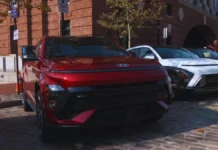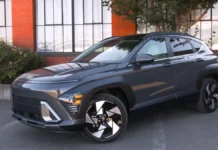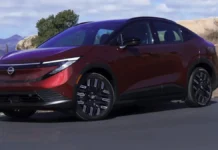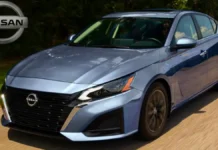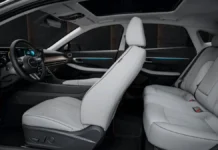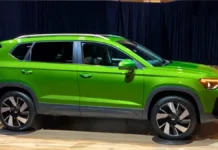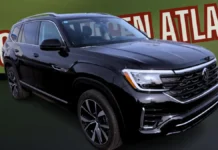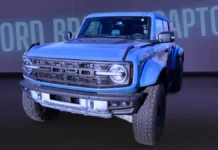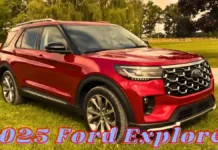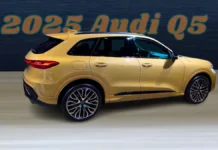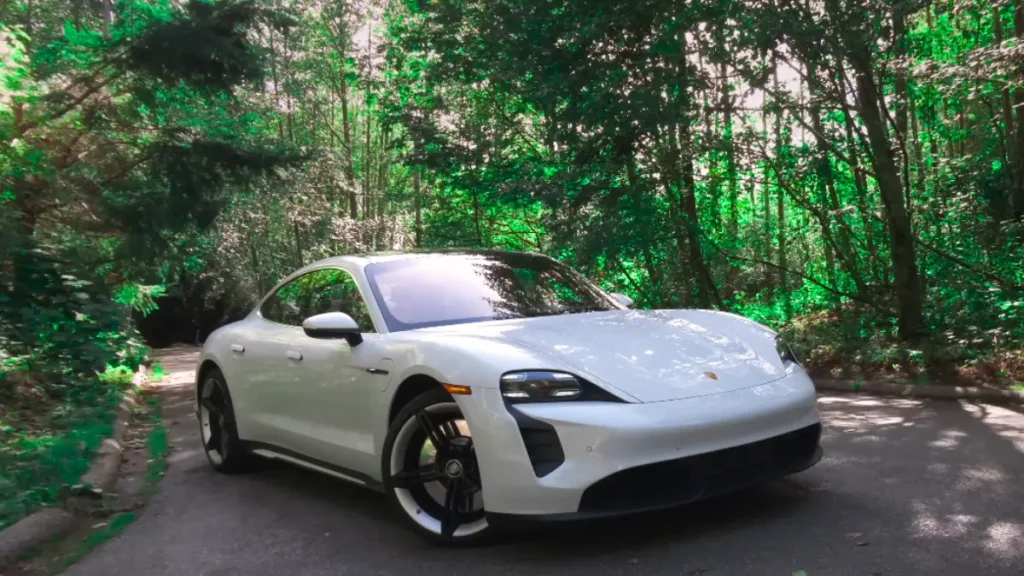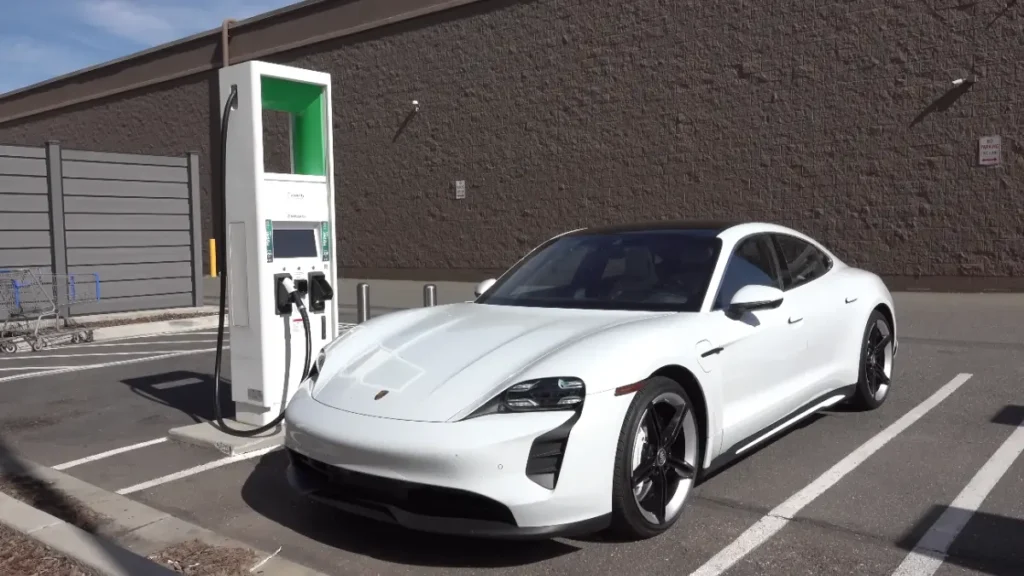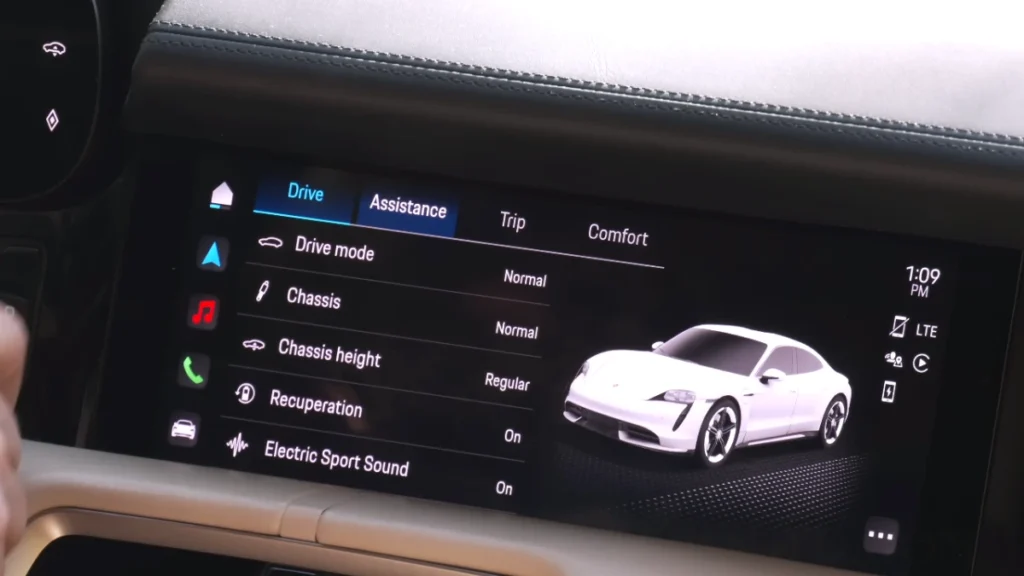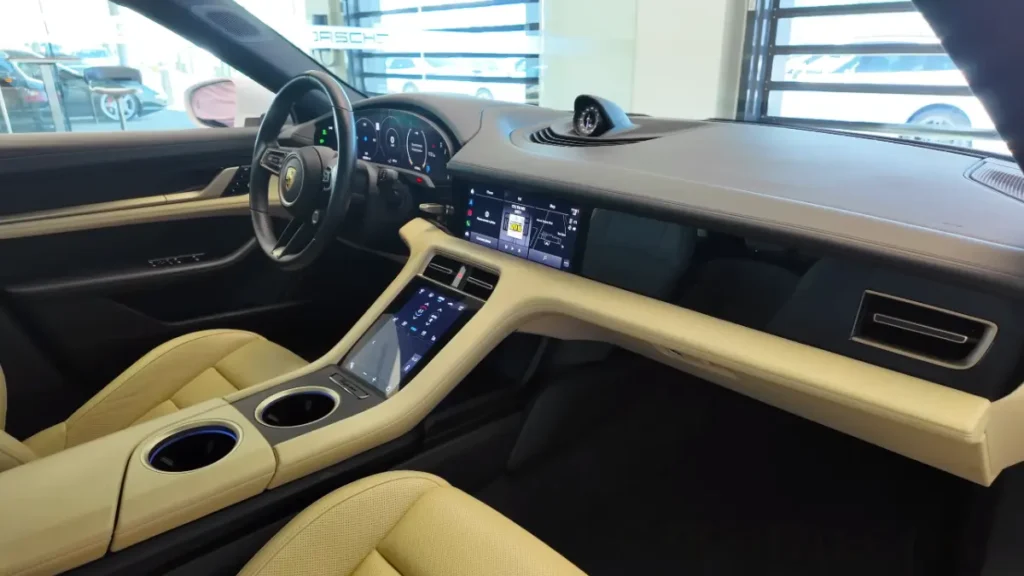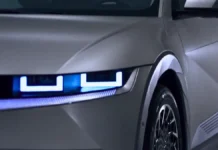Sometimes in life, you just have to treat yourself. As a car enthusiast, I allowed myself that indulgence: a certified pre‑owned (CPO) Porsche Taycan 4S. After living with it for six months, here’s a full accounting of its real‑world range, charging behavior, ownership surprises, and whether I’d make the same choice again.
Contents
Why I Chose a Used Porsche Taycan 4S
I knew from the start that buying used, especially a high-end EV, carries risks. But when I found a 2021 Taycan 4S in CPO condition, with about 32,000 miles on the clock, the price and remaining warranty tipped the scales. This car originally had an MSRP near $164,000, but I drove it off the lot for well under half that. And crucially, it still had over two years of Porsche’s factory warranty left.
In my mind, the Porsche Taycan 4S, especially as a used CPO, offers one of the best value propositions in the luxury-EV space. You skip a lot of depreciation pain, but get most of the driving thrills. Still, I went into this ownership with open eyes, fully aware that electric ownership isn’t devoid of cost or complexity.
Real‑World Range: Exceeding Expectations
One of the biggest questions in EV ownership is, “What range will I actually get?” The official numbers are conservative. For the 2021 Porsche Taycan 4S, depending on battery specification, you might see an EPA rating in the 200–227 miles range for typical configurations.
Over my six months of use, I ran multiple tests to find how far it would really go:
- In city driving (where EVs are most efficient), I once achieved nearly 290 miles on a full 0–100% charge.
- On a mixed route (approximately one-third city, two-thirds highway) I achieved 255 miles remaining when the display warned “5 miles left,” in ideal ambient conditions (65–70 °F).
- In a highway‑only test (70–80 mph driving), I estimated a practical range of approximately 235 miles even when driving more aggressively.
Those numbers often outstrip the nominal EPA rating. For instance, tests by independent outlets sometimes show the Taycan beating its official estimates under real‑world conditions. Edmunds
In short: the Porsche Taycan 4S offers usable range well above the bare minimum for most drivers, especially when conditions are favorable and you don’t push flat-out all the time.
Charging Behavior & Infrastructure Realities
To live comfortably with an EV, charging must work—and not be a constant chore. The good news: I have had no serious regrets in that regard.
Plug & Charge, Adapter Convenience, and Network Access
One of the most seamless features is plug‑and‑charge capability—no fussy apps or authentication routines at many modern high-speed stations. On multiple occasions, I plugged into 350 kW terminals and didn’t hit a snag. My car supports ISO 15118, enabling smoother “plug & charge” flows.
Because Porsche now has partial integration with the Tesla Supercharger network (via CCS-to-NACS adapters), I’ve also used Tesla stations in some regions without needing to juggle multiple charging apps. That interoperability has added peace of mind for long road trips.
DC Fast Charging Performance
In one scenario, I needed just a small top-up to make it home, so I pulled into an Electrify America station. The Taycan handled a burst over 250 kW. I used DC fast charging sparingly (mainly for travel), favoring overnight home charging when possible.
Per published specs, the Taycan 4S (with the “Performance Battery” version) can support around 223 kW DC peak charging, and 10–80% charging in around 17 minutes under ideal conditions. If equipped with the larger Performance Battery Plus, those numbers improve further.
AC / Level 2 Charging at Home
At home, the Taycan handles 11 kW AC charging. The full charge (0–100%) on AC can take upward of seven to eight hours in many setups. That means overnight charging is convenient and sufficient for most daily use.
What Lives Up to the Hype — and What Doesn’t
Driving Dynamics: Electric Thrills
The driving feel of the Porsche Taycan 4S is a major highlight. The steering is direct and communicative; the chassis feels grounded, and the car responds to driver inputs in a way many EVs don’t. In corners, the rear-axle steering (in my car) adds agility, letting you toss it around tighter turns. The car rewards you for driving it.
The instantaneous torque (delivered quietly) means launch performance is compelling—no engine roar, but plenty of shove. It feels like a stealth fighter: fast, aggressive, but without announcing itself. For many Porsche purists, the absence of engine sound is a loss; but in my view, it’s a different kind of enjoyment, not an inferior one.
Interior & Ergonomics
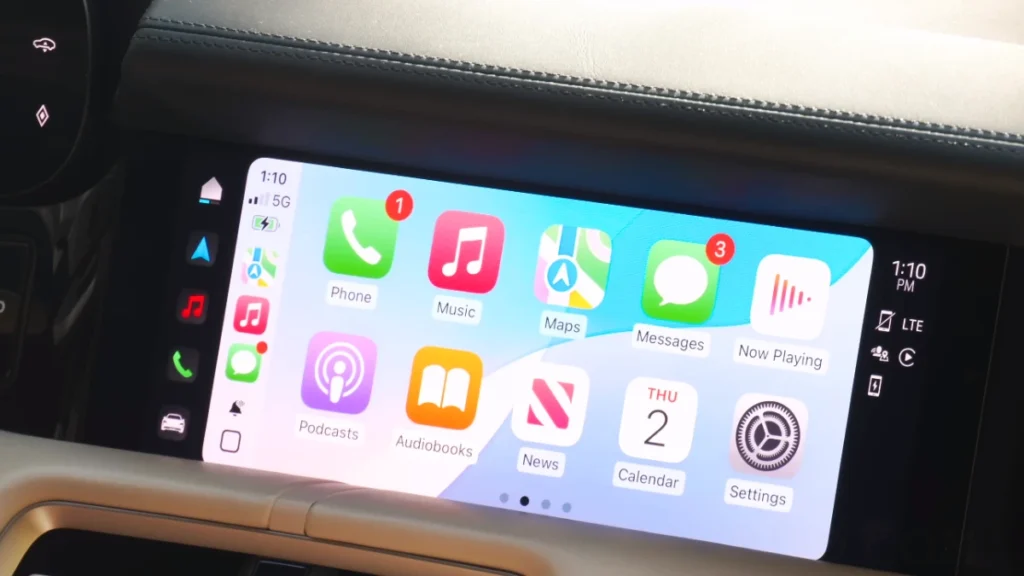
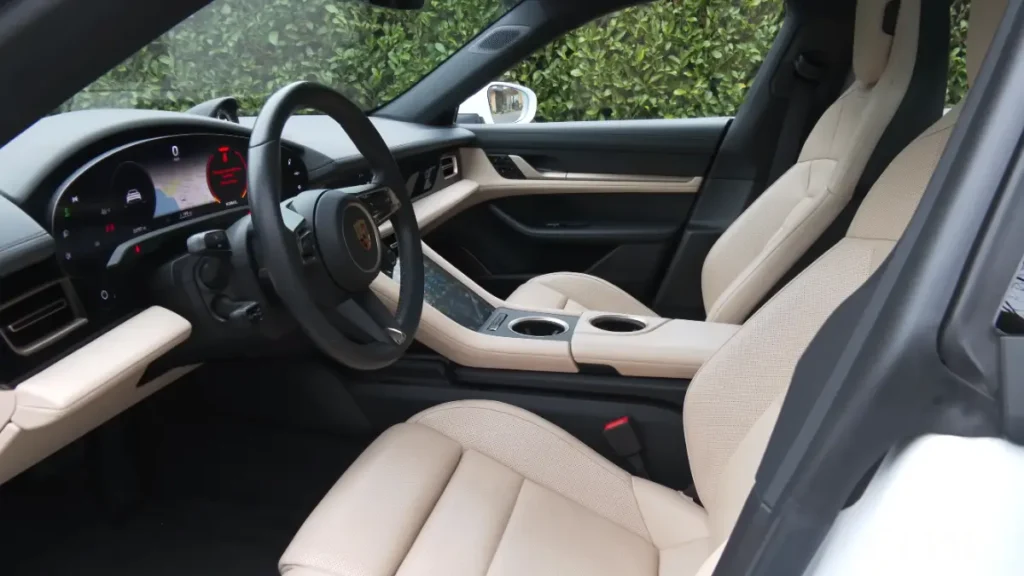
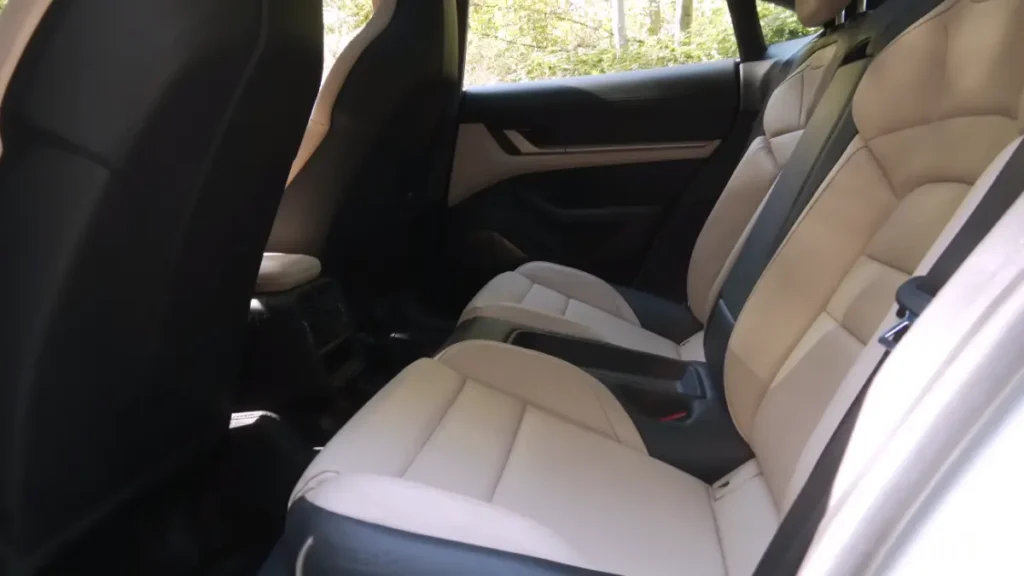
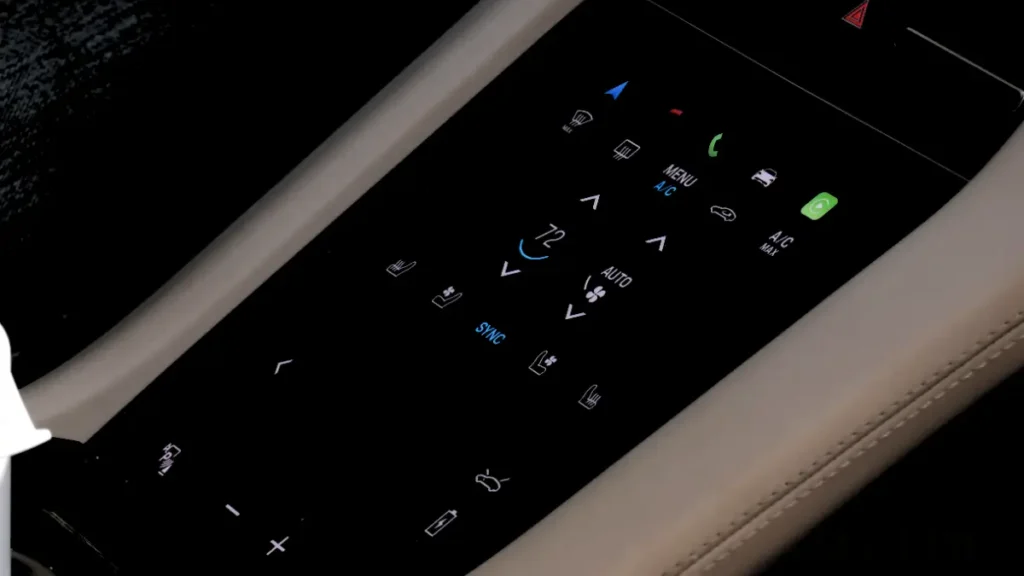
The interior feels premium. The panoramic glass roof is a welcome luxury (though I do wish a powered shade had been standard). The seating position is low and sporty, and quality of materials is excellent.
However, there are quirks:
- The central console lid is finicky. If there’s something inside, it’s awkward to retrieve mid-drive. The phone-charging pad is under that cover, making access tricky when the console is cluttered.
- Controls like airflow sometimes require navigating menus rather than using tactile buttons, which can be less intuitive on the move.
- Apple CarPlay and Porsche Connect have had hiccups in my car. I subscribe to the Connect service (around $26/month), expecting native Spotify / Apple Music integration; but I still can’t reliably log in. That’s frustrating, especially given how good the Burmester audio system is.
- Entry and exit can be bothersome for some — the car is low, and rear-seat ingress/egress is tight. The rear roofline restricts headroom. The rear cargo space is modest, and the rear liftgate can be overly sensitive (almost a touch to open/close). The frunk isn’t huge, but serviceable for small items.
Reliability & Surprises
I’ve had exactly one notable issue in six months: after a nighttime outing, the car wouldn’t start. Porsche owners sometimes refer to this as the “red ring of death.” I called Porsche support, and the solution was to walk away, lock the car, wait ten minutes, then try again. That apparently resets some systems. They also updated the software during a dealer visit. Since then, zero recurrence.
Given that EVs eliminate many mechanical maintenance points (oil changes, spark plugs, timing belts, etc.), the long-term maintenance burden is lighter. That said, you still must budget for:
- Coolant flushes every few years (est. $800–1,000)
- Brake maintenance (if you opted for premium coated brakes, costs can be extremely high)
- Tire wear (the Taycan is heavy and performance tires are expensive)
- Software updates / recalls that may require dealer visits
Also worth noting: battery degradation is often overstated. In my six months, I’ve seen no obvious signs of meaningful capacity loss. Many EV owners report mild annual degradation, and warranties often cover battery health for ~8 years or ~100,000 miles.
“In forums, some users raise concerns of range and software issues—some traded theirs early due to erratic range drop or glitches.” Reddit That’s a caution: not every unit will be perfect.
Would I Do It Again?
After six months of ownership, driving with this car daily, and pushing it on long trips—I’m confident in my verdict. Yes, I would buy this Porsche Taycan 4S again.
It’s been the most thrilling, rewarding vehicle I’ve ever owned. Even though it’s a used car, the emotional payoff and usability have justified the investment. Some critics will miss the sound of combustion or the growl of a flat-six—but there’s a new kind of emotional connection in electric performance. There’s beauty in silent acceleration, in instantaneous torque, in the clean line between power and poise.
As I browse the CPO market now, I see that the “bargains” are less frequent. Resale values for Taycans are firming, and used 4S models are no longer as undervalued as before. But even amid that shift, the value proposition of used EV ownership remains strong.
Do I miss extra range from newer models (2025 Taycans, for example)? Not really. The charging speed and real-world usability of this 2021 model serve me perfectly. Many of us drive 30–40 miles a day; dragging heavy extra battery just to cover extremes isn’t always necessary. I cap charge at 80% daily and have had zero range anxiety so far.
If I were to do it all over, I’d still lean toward the Porsche Taycan 4S as my sweet spot: performance, premium, and not overstretching.
Lessons & Advice for Prospective Buyers
If you’re considering buying a used Porsche Taycan 4S, here’s what I’ve learned and what I’d tell others:
- Go CPO if possible. The certified pre-owned route gives you warranty backups and reduces hidden risk. Uncertified units carry more uncertainty—especially on battery health and software.
- Have a battery health readout. Ask for state-of-health (SoH) metrics from the dealer. That gives you confidence about capacity and degradation.
- Test software and connectivity before buying. Log into Porsche Connect, connect Apple CarPlay, test climate controls, etc. If there are glitches, you want to know them ahead of time.
- Push the car hard in your test drive. Use highways, try loading cargo, simulate real life. The console lid, rear seats, and ergonomics often reveal themselves only under stress.
- Budget for consumables. Though many maintenance items vanish (no oil, no belts), coolant service, brakes, tires, and software updates cost real money.
- Respect charging etiquette. Don’t hog a charger if you’re not actively using it. Use public fast charging sparingly (for trips), and charge at home whenever possible.
- Be realistic about your daily range needs. Most buyers don’t need 400+ miles of range. The Taycan 4S’s real performance is plenty for most commuting and travel.
Final Thoughts
Owning a used Porsche Taycan 4S for six months has been a deeply rewarding experience. The combination of electric performance, Porsche driving dynamics, and intelligent charging integration has exceeded my expectations. It’s not a perfect car — there are quirks and compromises — but nothing fatal. For someone seeking a premium EV with soul, the Taycan 4S remains a compelling option.
If you’re thinking about buying one, curious about specific model years, or want help figuring out charging strategy or inspection checklists, I’m happy to share more from my experience
Post You May Find Useful:
- 2025 Lotus Emira 2.0T Review
- Hypercare in Automotive
- The Best Hypercars
- Lamborghini Revuelto
- 2025 Porsche 911 Carrera
- New Aston Martin Vantage.
- Assembling the LEGO® Bugatti Bolide
FAQs (Frequently Asked Questions):
- What is the real‑world range of a used Porsche Taycan 4S?
In mixed driving I’ve achieved ~255 miles on a full charge (city + highway), while in city environments I once recorded nearly 290 miles. Under highway speeds (70–80 mph), realistic range is closer to 235 miles. - Is it reliable to buy a used Porsche Taycan 4S?
Yes—as long as it’s CPO or well‑inspected. In my six months of ownership, I experienced one startup glitch (the so‑called “red ring”), which resolved via software update. Otherwise, no major issues. - What kind of maintenance does a Taycan 4S require?
Compared to combustion cars, much less: no oil changes, no spark plugs, no timing belts. Key ongoing costs include coolant system service (every few years), potential brake work (especially if using coated brakes), and regular software updates. - How fast can a Taycan 4S charge?
Depending on battery variant, I observed DC fast charging rates above 250 kW in the wild. The Taycan also supports plug‑and‑charge at many stations, making high‑power charging fairly seamless. - Would you buy another used Porsche Taycan 4S?
Yes — absolutely. The driving feel, value proposition, and EV usability make it highly rewarding. Even with quirks and costs, it’s one of the most satisfying vehicles I’ve owned.

